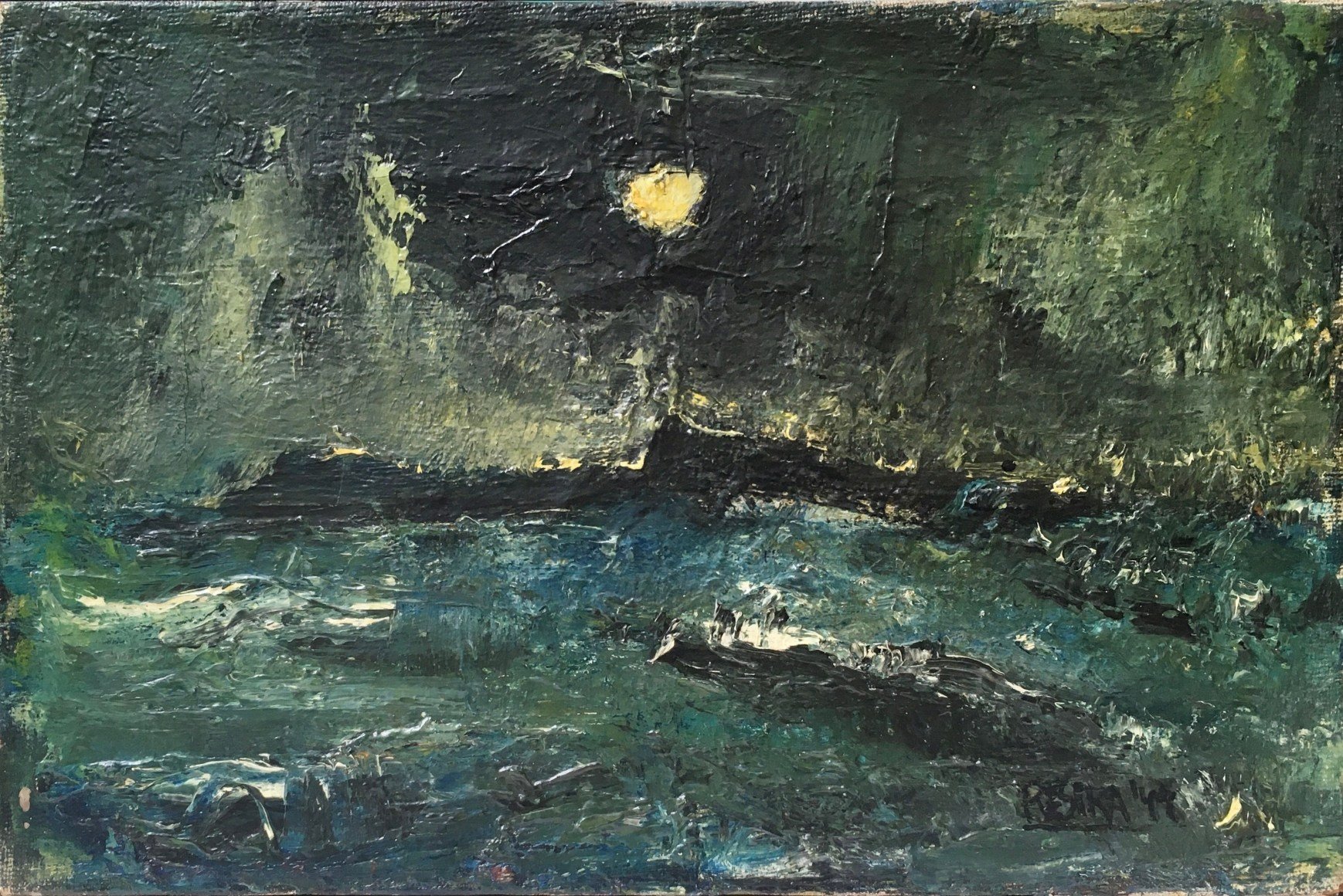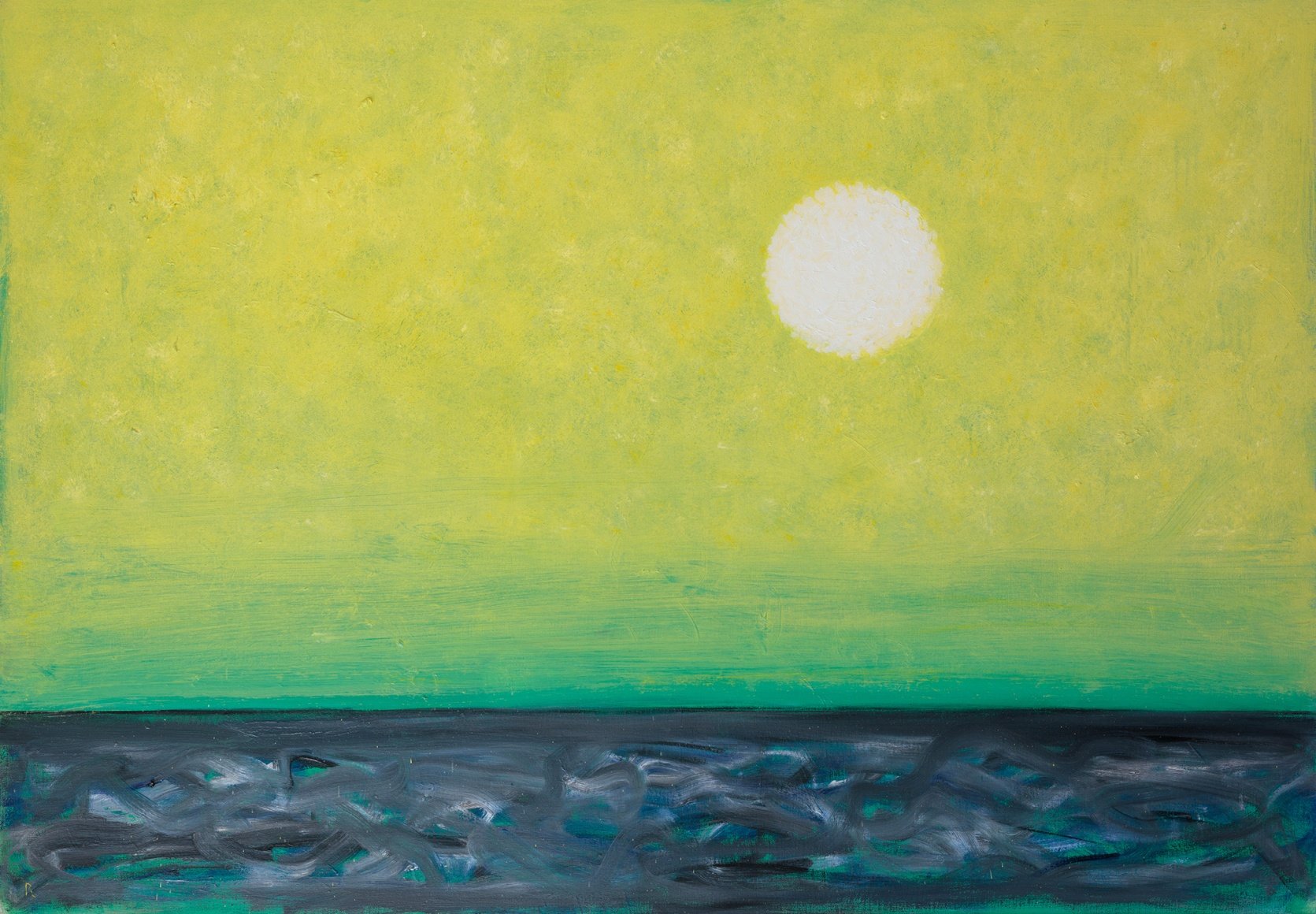THE NEW CRITERION, June 2024
On “Klimt Landscapes” at Neue Galerie, “Wayne Thiebaud: Summer Days” at Acquavella Galleries & “Paul Resika: Ode to the Moon” at Bookstein Projects, New York.
A distinguishing feature of modern art has been its pursuit of light. Of course, all of visual art is concerned with light. What modernism did was dispense with the controlled light of the salon in search of bolder and brighter sensations. Modern painters looked to reflect not merely a sense of sight but also the feeling of radiance. So they explored direct light and, in particular, summer light, chasing the sun into the countryside with their trunks of painting equipment in tow.
Gustav Klimt (1862–1918) was one of those painters whose compositional innovations were charged by the summer sun. A recent survey at Neue Galerie titled “Klimt Landscapes” looked not only to the verdant visions he captured in the Austrian towns alongside the Attersee between 1900 and 1916, but also to the lush creative landscape that unfurled around him in photography, jewelry, and fashion.1
Gustav Klimt, Judith and the Head of Holofernes, 1901, Oil & gold on canvas, Österreichische Galerie Belvedere, Vienna.
Today Klimt is most renowned for his “golden style.” His bejeweled portraits reached their apotheosis in such works at Judith and the Head of Holofernes (1901), also known as Judith I, and The Kiss (1908–09), both in the Österreichische Galerie Belvedere, Vienna. His Portrait of Adele Bloch-Bauer I (1907), the “lady in gold” restituted from Vienna to the subject’s Jewish heirs, now forms the heart of Neue’s permanent collection. In these works, Klimt, the son of a gold engraver, combined the decadence of precious metal with a sense for mosaic-like composition, taking inspiration from the shadowless Byzantine iconography in Ravenna’s Basilica of San Vitale.
Yet Klimt was more than an iconographer. He looked to move beyond these studied, labor-intensive portraits even as he relied on them to provide income for his large domestic payroll (he fathered at least six children with three mistresses while supporting multiple members of his extended family, including his widowed sister-in-law, Emilie “Midi” Flöge, a fashion designer and his muse). Klimt found relief in the Salzkammergut region of Upper Austria, north of Salzburg. Each summer, after 1900, he traveled there from Vienna to paint along the lake towns of the Attersee.
Gustav Klimt, The Park, 1909, Oil on canvas, Museum of Modern Art, New York.
Organized by Janis Staggs, Neue’s director of curatorial and manager of publications, “Klimt Landscapes” took a welcome, wide-angle view of these creative sojourns. The exhibition brought together such masterpieces as The Park (1909, Museum of Modern Art, New York), Kammer Castle on the Attersee I (Castle in the Lake) (1908, National Gallery Prague), and Forester’s House in Weissenbach II (Garden) (1914, Neue Galerie). The survey assembled works dating back to Klimt’s academic training and continuing on through his many experiments with optics, providing along the way several examples of jewelry by Josef Hoffmann and Koloman Moser together with many photographic portraits of Klimt’s own projections of summer leisure.
Trained at the Vienna School of Arts and Crafts of the Imperial Royal Austrian Museum of Art and Industry, known today as the Museum of Applied Arts Vienna, Klimt proved to be a precocious academic talent. The exhibition began with his figure studies of 1880 and his Two Girls with Oleander (ca. 1890–92, Wadsworth Atheneum, Hartford), an astonishing vision of glowing Pre-Raphaelite women plucking flowers beside an egg-and-dart frieze.
Gustav Klimt, Two Girls with Oleander, ca. 1890–92, Oil on canvas, Wadsworth Atheneum, Hartford.
Seeing Klimt’s command of painterly illusion makes his modernist compression, developed just a few years later, all the more remarkable. A founding member of the Vienna Secession in 1897, he joined fellow academic painters to look beyond the style of the salon. Yet for all of its innovative surface application, Klimt’s subsequent golden style owed much to academic structure. Beneath the ornament, his shimmering portraits were essentially salon paintings. Part academic, part modern, these works were dismissed by the devotees of either camp. Klimt remained largely absent, for example, from the French-focused timeline of New York’s Museum of Modern Art. As such distinctions have diminished over time, however, the hybrid nature of these works has only made them more compelling. Today his Portrait of Adele Bloch-Bauer I has become known as “Austria’s Mona Lisa” and attracts commensurate crowds and Hollywood fanfare, serving as the focus of the 2015 biographical drama Woman in Gold.
The relief provided by the Attersee owed in part to the fact that Klimt had received little academic training in landscape painting, which was considered a lower genre than history painting and portraiture. This lack of schooling left Klimt free to experiment with the Stimmungsimpressionismus, or “atmospheric impressions,” that he felt during his Sommerfrische, “summer holidays.” Unlike his studied portraits, Klimt painted his landscapes without preparatory sketches. The unidealized composition of this “vacation work” helps underscore the leisure of their creation. Klimt viewed his landscape painting as a segment of his daily therapy. A letter from August 1902 outlines his summer workout routine:
Early in the morning, about 6 . . . I get up—if the weather’s good I go to the nearby wood—I’m painting a small beech wood there (if the sun’s shining) . . . that takes me to 8, then comes breakfast, then a swim in the lake, carefully of course—then I paint a little, perhaps a view of the lake by sunlight, or if the weather’s dull a landscape from my window—sometimes I drop this morning painting and study my Japanese books . . . Then comes midday, after lunch I sleep a little or read, and before or after tea another swim . . . After tea I’m painting again . . . . Every now and then I fit a bit of rowing into the day’s program in order to limber up.
A proponent of the Gesamtkunstwerk, Klimt saw himself as a piece of that “total work of art.” In the summer he dressed the part by dispensing with the cummerbund and donning a blue, caftan-style painter’s smock. (Early Christmas shoppers, take note: Neue’s gift shop features an “exact replica” of this full length indigo linen smock with “hand-embroidered white epaulets and front pocket.”) Klimt appears in repeated photographs around the Attersee in this getup, walking on docks and strolling on trails, even as the figures around him didn’t always get the caftan memo, appearing in more standard summer outfits.
Beech Forest in Autumn, 1898. Photo: Hugo Henneberg, Staatliche Museen zu Berlin.
One revelation of this survey was the extent to which photography influenced and shaped Klimt’s own artistic landscape. “It would be difficult to overestimate the sizable impact of photography on Klimt’s development as a landscape painter,” writes Staggs in the exhibition’s catalogue. The Austrian Camera Club of Amateur Photographers, later known as the Vienna Camera Club, was established in 1887. Klimt surrounded himself with photographers such as Moriz Nähr, Heinrich Böhler, and Emma Bacher-Teschner, and he regularly posed as their subject. Klimt developed his own unusual, square landscape format largely under the influence of their often-square images. He also used telescopes and photographic aids to help compose his paintings, flattening his landscapes and even drawing on the patterns of photographic emulsion. Just compare Hugo Henneberg’s photograph Birch Forest in Autumn (1898, Staatliche Museen zu Berlin) with Klimt’s Beech Forest I of circa 1902 (Galerie Neue Meister, Dresden), or Heinrich Kuehn’s Meadow with Trees (1897, Photoinstitut Bonartes, Vienna) with Klimt’s Pear Tree (Pear Trees) (1903, Harvard Art Museums). Klimt painted his landscapes in the style of this early photography.
Gustav Klimt, Beech Forest I, 1902, Oil on canvas, Galerie Neue Meister, Dresden.
The remarkable set of Autochrome Lumière color photographs that Friedrich G. “Fritz” Walker took of Emilie Flöge and Klimt, in the garden of Villa Paulick in September of 1913, then brought the exhibition full circle. Early photography, in particular color photography, was especially light-intensive and relied on the same summer sun as did Klimt. Here in colorful costumes he and Flöge appear as both subjects and objects—flattened into their own lush landscapes in these photographic “drawings with light.” From “lady in gold,” we end with artists in green.
The advent of summer can be particularly sweet when it comes with a helping of Wayne Thiebaud (1920–2021). The late grand-manner painter of American Century marginalia remains on view at Acquavella Galleries through mid-June with an exhibition that focuses on his warmest creations. “Wayne Thiebaud: Summer Days” gathers works from over six decades of the artist’s career, ranging from his bathers, beaches, and balls to his cola, confections, and cones.2
Wayne Thiebaud, Untitled (Six Soda Pop Bottles), ca. 1985, Watercolor on paper, Collection of Matt and Maria Bult.
Painted with a sugary impasto, this masterly work can seem fresh and ready to melt in the summer sun. Thiebaud was the American Giorgio Morandi for his uncanny ability to transform paint into the subjects he depicted. In part this is due to the halation effects along his edges, as shadows are broken into lines and fields of blue and red that become delicate frosting for his forms, as seen in such works as Strawberry Cone (1969) and Two Tulip Sundaes (2010) and even such portraits as Betty Jean (ca. 1965). Thiebaud was particularly attuned to the textures of his media. His thirst-quenching Untitled (Six Soda Pop Bottles) (ca. 1985) would only work as a watercolor on paper. His Cheese Display (1969) feels milky-smooth, while his Beach Gathering (2000–15) appears encrusted with sand. Due to this innate sense for intimism, I find his portraits and still lifes work better than his landscapes. Thiebaud was at his best when subject and painting could melt into one.
The paintings in “Paul Resika: Ode to the Moon,” on view last month at Bookstein Projects, spanned a remarkable eighty years.3 A suite of bold new work, of celestial bodies pared down to brushstroke, color, and form, all painted in Resika’s ninety-fifth year, was connected to Moonlight, a small landscape executed in 1943–44, when the artist was just sixteen years old. Beyond the official show, the gallery’s office also featured an extra work from the artist’s collection: Panorama of the Hudson (The Mermaid and the Factory) (1948), a wild composition of bridges, train tracks, and the ghost-like rollercoaster of the long-departed Palisades Amusement Park—painted at a time when the teenage artist could catch a ferry there just across town from his Central
Harlem studio.
Paul Resika, Moonlight, 1943–44, Oil on canvas, Bookstein Projects, New York.
The brightness and compositions may have varied, but everywhere a minimum of line defined depth in what were otherwise blind, blinding, and turbulent sights. Illuminated across time, the full assembly revealed a consistency of vision and a connected sense for the bare essentials. Revisiting the illusion of light in paint, Resika in his latest work has doubled down on the experimental quality of what can be done with a minimum of means. In several canvases, a simple dash, placed just right, becomes a horizon line reflecting the luminous spheres above. These orbs, all of slightly different values, meanwhile appear to fill the canvases with various shades of glowing color. “Marcel Breuer told me never to paint a green picture,” Resika explained to me when I ran into him at the gallery. So he did just that. This painter, who has been bucking convention for eighty years, remains a guiding light for the daring possibilities of oil on canvas.
Paul Resika, End of the Day #12, Oil on canvas, 2023, Bookstein Projects, New York.
“Klimt Landscapes” was on view at Neue Galerie, New York, from February 15 through May 6, 2024.
“Wayne Thiebaud: Summer Days” opened at Acquavella Galleries, New York, on April 26 and remains on view through June 14, 2024.
“Paul Resika: Ode to the Moon” was on view at Bookstein Projects, New York, from April 18 through May 31, 2024.












